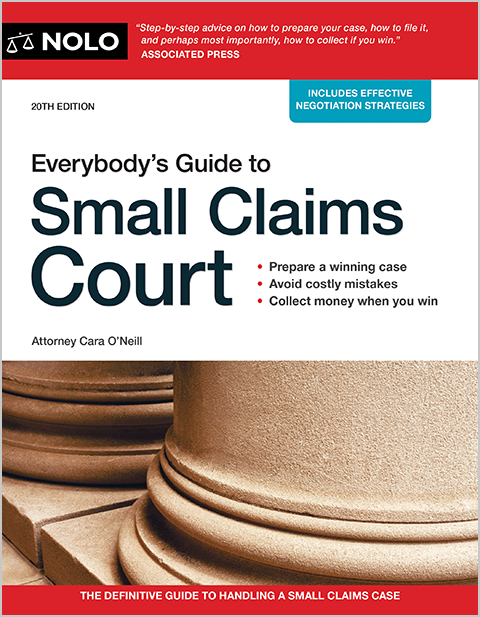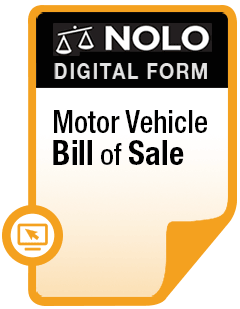When you're at fault for a car accident, the consequences depend on where you live (in a "fault" or "no-fault" state) and the details of your car insurance policy.
Here's what you need to know if you think you might be at fault for a car accident:
- If you did something (or failed to do something) that caused a car accident, you're probably at fault.
- Your liability car insurance pays for harm you cause to others (including injuries and vehicle damage) when you're at fault for an accident.
- In an insurance claim, the insurance company decides who they think was at fault for the crash; if a car accident lawsuit goes to trial, a judge or jury decides.
- Your car insurance premium will almost certainly go up if you're at fault for an accident.
Let's take a closer look at car accident fault, why it's important, and more.
- What Does It Mean to Be "At Fault" for a Car Accident?
- Why Is Car Accident Fault Important?
- How Do You Prove Fault for a Car Accident?
- What Will My Car Insurance Cover If I'm at Fault for an Accident?
- Does Car Insurance Cover If Someone Sues You?
- Will My Car Insurance Go Up If I'm at Fault for an Accident?
- Talk to a Lawyer
What Does It Mean to Be "At Fault" for a Car Accident?
When you're "at fault" for a car accident, it means you're to blame ("liable" in the language of the law). When it comes to car insurance claims and personal injury lawsuits, the at-fault driver is usually the one who drove negligently (carelessly). Examples of driver negligence include:
- speeding
- failing to maintain equipment (brakes, for example)
- rear-ending another car
- driving under the influence of drugs or alcohol (DUI)
- driving on the wrong side of the road
- violating a pedestrian's right of way, and
- using your phone while driving.
Why Is Car Accident Fault Important?
In most states, if you're at fault for an accident, you (or your insurance company if you have liability insurance) will have to pay for the losses of the other drivers, passengers, and anyone else who was harmed. Losses might include things like car repairs, medical bills, lost income, and pain and suffering.
In some cases, you might not be the only driver at fault. In shared blame situations, your state might use "comparative negligence" to assign a percentage of fault to the drivers involved in the accident. Each driver collects damages equal to the other driver's percentage of fault. In a few states with "contributory negligence" laws, you get nothing if you're found even 1% at fault for an accident.
The issue of fault will come up when you talk to an insurance adjuster after an accident, during car accident settlement negotiations, and in court if you or the other driver files a car accident lawsuit.
How Do You Prove Fault for a Car Accident?
When it's time to prove fault for a car accident, insurance adjusters and lawyers typically look at the rules of the road—traffic laws—and evidence, like:
- police reports
- witness statements
- photographs
- the location of vehicle damage, and
- traffic tickets, if any, issued after the accident.
To prove that you were at fault, the other driver must usually start by showing that you were negligent. Negligence simply means that you didn't drive as carefully as you should have under the circumstances.
Learn more about proving fault for a car accident.
What Will My Car Insurance Cover If I'm at Fault for an Accident?
What your auto insurance covers depends on (among other things) the state where you live and the kinds of insurance coverage you carry.
You live in a fault-based state. If you live in a fault-based state and you're responsible for an accident, your liability insurance will pay, up to the limits of your coverage, for the personal injuries and property damage you cause others. Damages like medical bills, lost wages, other out-of-pocket losses, and pain and suffering will be covered. In most states, liability insurance is required by law.
The damages to your car will be paid for by your collision coverage, if you have it.
You live in a no-fault state. If you live in one of the dozen or so no-fault states, you'll turn to your own personal injury protection (PIP) insurance to pay your medical bills and lost wages after a crash, regardless of who was at fault. PIP typically only insures personal injuries, so your collision coverage (again, if you have it) will pay to repair or replace your damaged property.
Does Car Insurance Cover If Someone Sues You?
Yes. If you cause a car accident, and the other driver (or anyone else who was harmed) files a lawsuit against you over the crash, your liability car insurance will cover that situation. That means:
- the insurance company will hire (and pay for) a lawyer to handle every aspect of the lawsuit that's been filed against you—everything from court filings to depositions and appointments in court, and
- if the lawsuit reaches a settlement, or the case goes all the way to trial and you lose, your car insurance will cover the amount of the settlement or the amount you're ordered to pay, up to the dollar limits of your coverage.
So, if you've been "served" with a lawsuit or otherwise received notice that you're being sued in connection with a car accident, the first to do is let your car insurance company know about it.
Will My Car Insurance Go Up If I'm at Fault for an Accident?
If you're found at-fault for an accident, your car insurance rates will almost certainly go up when it's time to renew your policy. The seriousness of the accident and the amount your insurer paid out affects your rates. For example, a parking lot accident probably won't raise your rates as much as a T-bone accident causing serious injuries.
You'll typically be stuck with higher insurance rates for three to five years, depending on where you live and your insurance company. Some states and insurers reduce your rate for each year you drive without a traffic violation or accident. To lower your rate after an accident, try to:
- shop around
- ask for a discount, and
- take a defensive driving class.
Talk to a Lawyer
If you think you might be at-fault for an accident, talk to a car accident lawyer. A lawyer can help you settle your case or defend you in court against a lawsuit. As mentioned above, if you have auto insurance, your insurance company should provide you with a lawyer. If you're not insured, you'll have to find an attorney on your own.
- What Does It Mean to Be “At Fault” for a Car Accident?
- Why Is Car Accident Fault Important?
- How Do You Prove Fault for a Car Accident?
- What Will My Car Insurance Cover If I’m at Fault for an Accident?
- Does Car Insurance Cover If Someone Sues You?
- Will My Car Insurance Go Up If I'm at Fault for an Accident?
- Talk to a Lawyer



